|
|
 |
|
|
Italian Armoured Divisions
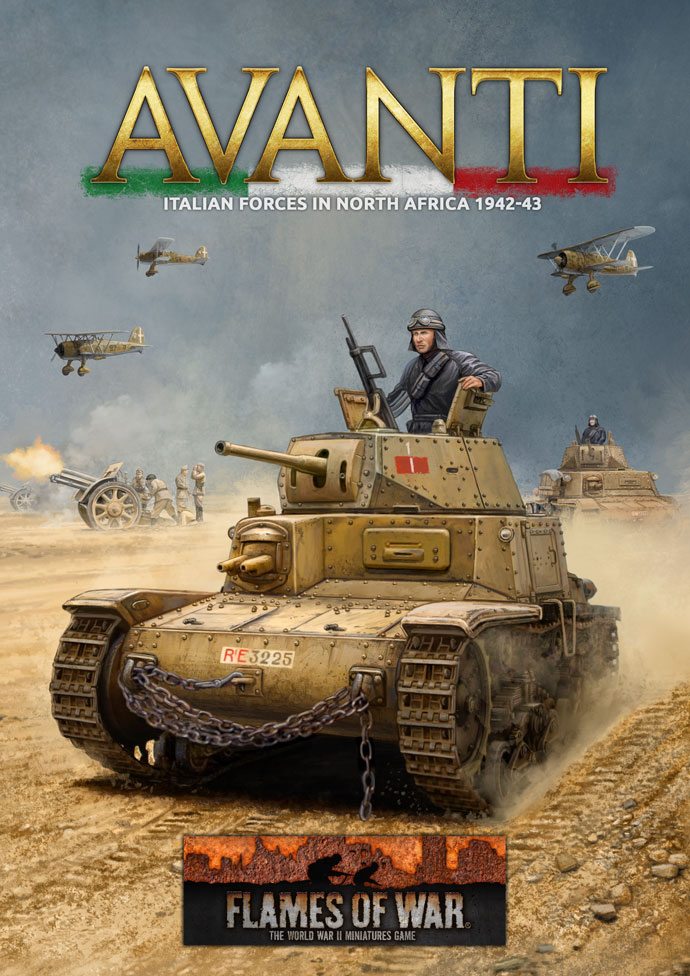 |

Italian Armoured Divisions
During the course of World War II the Italian Army deployed four armoured divisions. Three were formed before 1940 by expanding on already existing armoured brigades, they were Ariete, Centauro and Littorio.
In 1941 the new standard armoured division consisted of 8,600 troops, 189 M-type medium tanks, 40 armoured cars, 20 self-propelled guns and 70 pieces of artillery, and 1,120 vehicles.
|
131. Divisione Corazzata "Centauro"
The Centauro Armoured Division was formed on 20 April 1937 in Siena from the merging of the 1. Armoured Brigade and various other units. At the start of the war the Centauro division was deployed in Albania and saw action in the Balcanian front and during the Greece campaign. It was then returned to Italy, where it remained from June 1941 to August 1942. |
 |
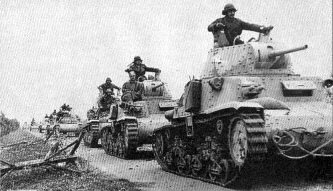 |
In March 1942, it’s under the command General Calvi di Bergolo and is organized as follows:
31° Tank Regiment with: XIV, XV and XVII Tank Battalions
5° Bersaglieri regiment with: XXI Motorciclisti, XIV, and XXIV (Amoured Car) battalions
131° Artillery Regiment
Transferred to the North-African front, the Centauro was heavily engaged in Libya and Tunisia suffering heavy losses.
|
In December 1942 the division is transferred to Gabes and receives reinforcements from Ariete, Littorio and Trieste.
Centauro took part in the rout of US troops at Kasserine Pass in February 1943, fighting along side their German allies.
At the time the division consisted of:
Centauro Armoured Division (Gen. C. G. Calvi di Bergolo)
31° Tank Regiment
5° Bersaglieri Regiment
131° Artillery Regiment
132° Anti-Tank Regiment
‘Lodi’ Recce Battalion (AB41) |
In March 1943 in Tunisia, division is attacked by the 2nd US Corps and fought valiantly for 12 days until it was joined by the German 21. Panzer division on 31 March. During the gruelling battle of El Guettar, US Forces out-manoeuvre and out-fight the Axis forces and virtually destroyed the Centauro Division.
Division is almost destroyed, the remaining tanks and semoventes form the Piscicelli battlegroup. The battlegroup fights until the end with the German 10. Panzer division.
The surviving units finally surrendered on 14 May 1943 in Tunisia. |
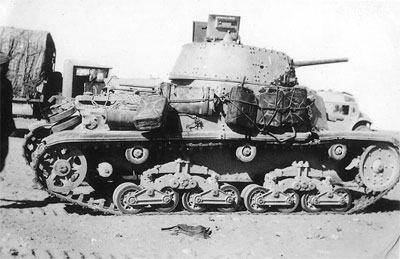 |
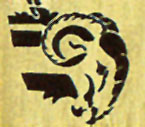 |
132. Divisione Corazzata "Ariete"
Formed on 1 February 1939 in Milan from the 2. Armoured Brigade. It was initially made up of the 8th Bersaglieri (motorised infantry) regiment, the 32nd tank regiment (equipped with L3 light tanks and a few M11/39 medium tanks), the 132nd artillery regiment, and additional divisional support units. |
|
At the outbreak of war the division was located in Verona and acted as a reserve unit during the French campaign.
Later that year, some battalions of the 32nd Tank Regiment (the I and II battalions M11/39 Medium tanks and the III and V battalions M13/40 Medium tanks) were moved to Libya to become part of the Special Armoured Brigade belonging to General Graziani’s 10th Army. During some sharp and fluid fighting from December 1940 to February 1941 the British Western Desert Force overran the 10th Army, occupying the whole of Cyrenaica and threatening the Italian hold on their Northern African possessions.
|
|
On 24 January the remainder of the Ariete landed in Tripoli and, on 31 March, saw its first action during the Axis counterattack. From February 1941 to November 1942 Ariete Division took part in the North Africa campaign attached to 20th Motorised Corps, alongside Rommel’s Deutsche Afrika Korps. It was reinforced in 1941 by 132nd tank regiment, which later completely replaced the 32nd, disbanded in mid-1942.
Ariete took part in the first Axis counteroffensive to re-conquer Cyrenaica, and then the siege of Tobruk.
|
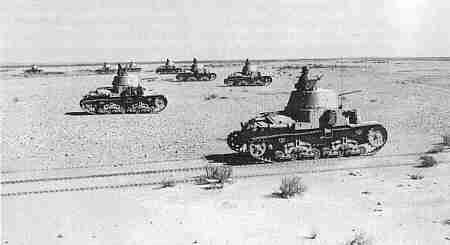 |
|
The 132nd tank regiment’s battalions (initially the VII, VIII and IX, the former two later replaced by the X and XIII) came equipped with M13/40 or M14/41 medium tanks, and, starting in early 1942, with Semovente 75/18 battalions from 132nd Artillery Regiment.
The division continued its excellent service in Libya and Egypt, its contribution was felt everywhere in that theatre. It took part in the second counteroffensive invasion and took part in the battles around El Alamein. During the last of these battles it consciously sacrificed approximately 120 of its tanks in the attempt to counter the enemy offensive and cover the withdrawal of the Axis army. Its gallantry gained the respect and praise of both enemies and allies alike.
|
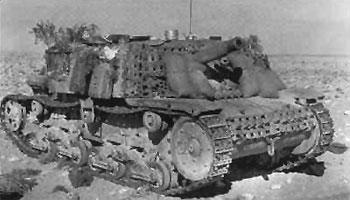 |
On 4 November 1942, at about 15:30, the last few surviving tanks, surrounded by an overwhelmingly superior enemy, broadcast their last message, “Enemy tanks broke through South of Ariete Division. Ariete thus surrounded, located 5kms northwest of Bir-el-Abd. Ariete tanks keep on fighting!”
They were destroyed to the last tank. On 21 November 1942, the Division was disbanded, but its name was kept by a task force assembling its remnants (along with those of Trieste Infantry division and Littorio Armoured division) into a fighting unit. |
| Ariete Tactical Group kept fighting throughout the retreat and subsequent battles in Tunisia, and was later forced to surrender along with the whole Axis Army in Northern Africa. |
|
133. Divisione Corazzata "Littorio"
Divisione Corazzata "Littorio" was formed in Parma at the end of 1937 by merging the 1. Divisione Celere into the existing Littorio infantry division. Littorio was the third Italian armoured division formed after Centauro and Ariete.
The original Littorio Infantry Division had fought in the Spanish Civil War as a unit of regular army “volunteers.” On its return to Italy it was converted to an armoured division. Its name comes from “lictor”, the name of those who carried the fasces, the rod-and-axes symbol adopted by Mussolini from ancient Rome.
Littorio saw action in the 1941 campaign against Yugoslavia and performed quite well. The Armoured Corps had been designed to defeat the Yugoslavs, and it did so. It was never intended for desert operations, but the need in Libya and Egypt for mobile formations had become urgent. At the end of 1941 Littorio was moved to North Africa. The Littorio Armoured Division arrived in Tripoli by March 1942.
|
 |
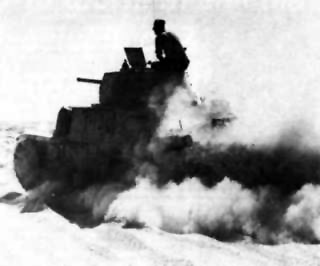 |
By April, the division had reached Benghazi in north-eastern Libya. The march was very slow, the division’s transport had been diverted to supply the front. The Axis command seemed in no rush to getthe untested division into action, preferring to bring the existing veteran formations to full strength. Ariete went into action at Gazala over-strength in tanks, artillery and anti-aircraft guns.
Littorio did not participate in the Gazala battle. A small battlegroup arrived at the front on June 20, as the battle was ending, and took part in the attack on Tobruk.
Littorio took a heavy beating during the battle of El Alamein (November 1942) and was dissolved. The remnants merged into the Ariete Tactical Group, which continued fighting in Libya and Tunisia into April 1943.
|
|
135. Divisione di Cavalleria Corazzata "Ariete II"
The fourth armoured division was formed on April 1, 1943 in Ferrara and had a new order of battle based on war experience:
Division headquarters
“Lancieri di Montebello” armoured reconnaissance unit
“Lancieri di Vittorio Emanuele II” armoured regiment
135. self-propelled anti-tank guns battalion
135. armoured artillery regiment
235. anti-tank artillery and self-propelled guns regiment
134. engineers battalion
+ service units
The armoured division consisted of 9,500 troops, 40 tanks, 50 armoured cars, 157 self-propelled guns and 176 pieces of artillery.
|
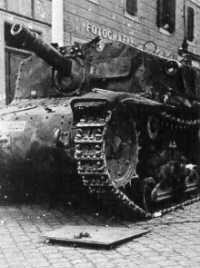 |
|
The Ariete II was involved in the defense of Rome (September 8-10, 1943) against the Germans. It was disbanded after the taking of Rome by German troops and its vehicles were taken over by Wehrmacht.
Wayne
|
Last Updated On Tuesday, January 11, 2022 by Wayne at Battlefront
|
|
|